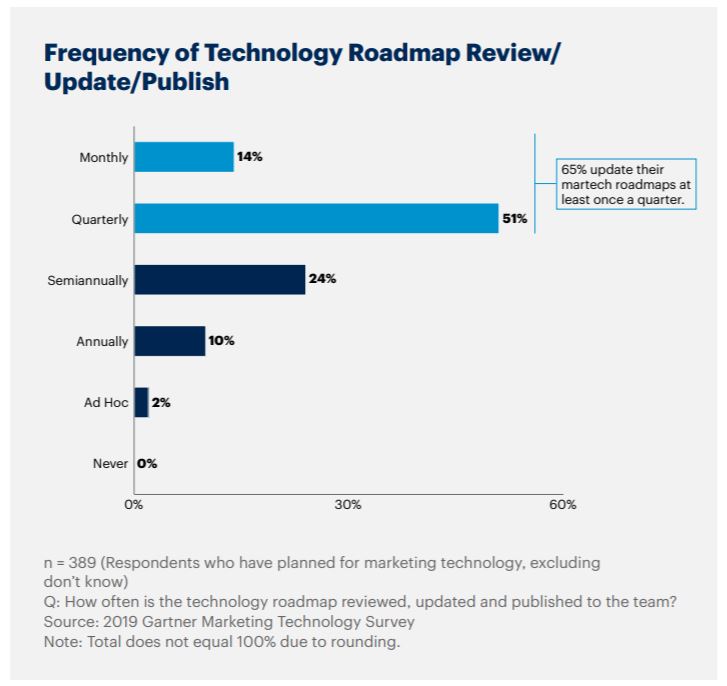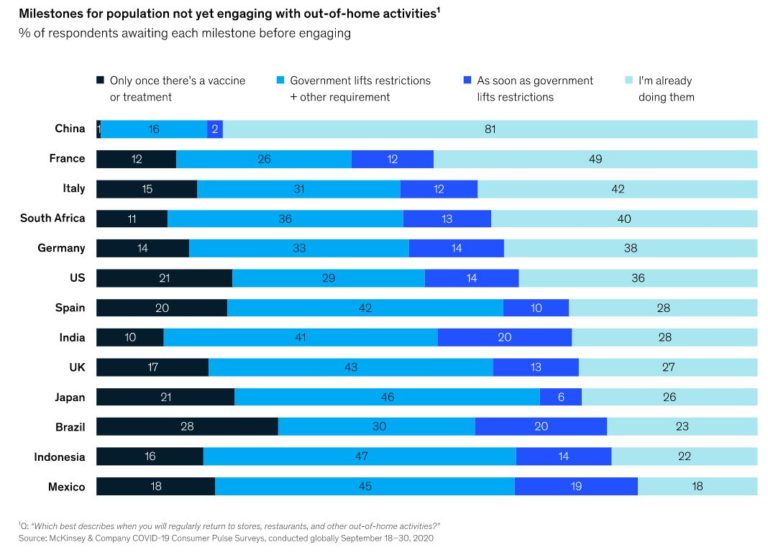The dark side of marketing technology (martech)
Even with all its potential, martech presents many challenges for businesses. From the problems with complexity to the inability to find talent, we’ll unpack some of them.
Even with all its potential, martech presents many challenges for businesses. From the problems with complexity to the inability to find talent, we’ll unpack some of them.
Marketing technology (martech) touches every aspect of modern business, going far beyond the marketing department into sales, customer service, and deep into the realm of IT. Regardless of size, most companies are using some form of martech, from email automation tools like MailChimp to social media management tools like Sprout Social.
For enterprise-level organizations, the explosion of tools combined with new capabilities like AI and machine learning make it possible to scale marketing efforts more quickly and efficiently than ever before. Even so, there is a dark side to all this tech—namely, confusion.
In 2011, Scott Brinker’s martech landscape contained just 150 tools. This year, it’s at 8000 (and growing).
 Source: Chiefmartec
Source: Chiefmartec
A survey by the World Advertising Research Center and global finance company BDO, revealed that 76% of marketers wanted to add more tools to their existing martech stack. This pressure to keep up with the rapidly changing landscape of martech is one of the downsides of having all this technology available.
There are other challenges, of course. The difficulty in finding and hiring people with automation and data skills, the problem of too much automation versus too little creativity, and the overall issue of complexity are among them. Let’s start with complexity—a problem that’s been increasing as the number of martech tools and solutions increase.
In ClickZ’s recent Marketing Automation Summit (which is, by the way, available on demand), the problem of complexity came up frequently as a persistent challenge among the marketing leaders who presented. The proliferation of data and tools available to automate marketing campaigns can be overwhelming.
Keeping the martech stack up to date is now a requisite task to keep up with constantly changing consumer behaviors and increasing expectations. Many martech leaders maintain a “martech roadmap”—a dynamic, flexible plan that aligns a company’s martech stack with their business goals.
The martech roadmap is not a long-term plan. According to Gartner’s 2019 Marketing Technology Survey, nearly 80% of marketing leaders said their roadmap doesn’t extend beyond 18 months. And how can it? In just one year, Scott Brinker’s Martech Landscape grew from 7000 to over 8000 solutions.
The Gartner survey revealed that two-thirds of Martech Leaders refresh their roadmap at least four times a year, with 14% indicating they refresh it monthly.
 Source: Gartner 2019 Martech Survey
Source: Gartner 2019 Martech Survey
This begs the question: who is spending so much time focused on monitoring, aligning, and updating the stack? The answer is: everyone, if you’re doing it right. This also brings me to the next challenge—marketing’s shifting skillset.
Another big pain point related to martech is the lack of available talent. The skills needed to manage today’s complex and technological marketing environment include having a comfort with (or proficiency in) data analysis, experience working with platforms of various flavors (CDPs, CRMs, DMPs, etc.), creativity, and flexibility all rolled into one holistic package.
The Gartner survey revealed that the biggest impediment to martech’s contribution to a company’s core business goals was the need to train or upskill existing talent. Identifying and recruiting martech talent came in as the third top challenge, with martech integrations sandwiched between the two.
Source: Gartner 2019 Martech Survey
There’s no quick fix to the problem of talent. Martech is constantly evolving, but it’s also relatively new, a problem businesses faced in the early days of the internet (who here is old enough to remember that Halcyon time?) when the need for expertise was great, but the availability of experts was scarce.
The marketing leaders on our Summit panel approached the issue of talent organically, with their main recommendation being to find people with the right blend of skills, though not necessarily experience, so they can easily learn and adapt.
Data analysis, data visualization, and the drive to connect the important information to a company’s goals and KPIs are among these needed skills.
But where does creativity fit in? Creativity in marketing is still a much-needed (and difficult to automate) skill. According to our marketing automation experts, don’t expect to find data and creative skills rolled into one person.
It’s much more realistic to hire multiple people, e.g., a creative person who’s somewhat comfortable with data and a data person who doesn’t mind getting a little creative (left brain/right brain is a key skill). Let’s dig deeper into that particular challenge.
The dark side of martech is starkly revealed when automation is overutilized. This is where you may encounter an “uncanny valley” effect (a pitfall raised by our MA Summit panelist, Jon Miller of Demandbase).
The uncanny valley is what happens when you get extremely close to simulating a human response, as may be the case with conversational AI/chatbots, but you’re just not there yet.
It can also occur if all aspects of the targeting/marketing/creative loop are automated with minimal human intervention. This is when things start go get creepy, but they can also really miss the mark.
Here’s a personal example: I ordered a product after clicking on a Facebook ad. The sale went smoothly and I was sent an order confirmation email. But I also started getting personalized emails from the vendor that implied I hadn’t completed my purchase.
“Time is running out,” the daily emails said. “We’ll give you a 15% coupon to complete your order!” This slightly-off personalized drip campaign destroyed my confidence in the company, made me wonder if my order had actually been completed (it had), and put me off buying anything from them ever again.
If COVID-19 has taught us anything, it’s that consumer behavior and sentiment can change in an instant. Ad creative and messaging that’s appropriate, empathic, and relevant is more important than it ever was. Consumer sentiment varies by location, so if you’re targeting a global market, it’s important to factor geographical nuance into your messaging.
Recent research by McKinsey found that consumers continue to shift their spending to essentials in most countries, but some countries like China are more optimistic, with consumers planning to increase spending on discretionary categories.
McKinsey also found wide variations, based on country, on which consumers are returning to normal out-of-home behaviors like going to stores and restaurants.
 Source: McKinsey
Source: McKinsey
Messaging obviously needs to be monitored and adjusted depending on where consumers stand on the “getting back to normal” spectrum. Automation can help with this, but it takes human creativity and experience to change messaging and creative so that it’s appropriate.
There is a final pitfall with technology that can be regarded as a consequence of all the other issues already listed—martech stacks tend to be underutilized, meaning companies are wasting money by not leveraging their marketing technology fully.
Gartner reported that marketing leaders in North America and the U.K. used an average of 61% of their martech stacks last year, and only 58% this year. Underutilizing the martech stack has a direct impact on its effectiveness, which is why having the right staff in place to manage the stack is so critical.
Martech tools are transforming the way we do business, automating processes and giving marketers the unprecedented ability to scale, but they’re not perfect.
Understanding the dark side of martech can help businesses better plan and maintain their martech stacks as well as the resources needed to ensure they facilitate business growth.